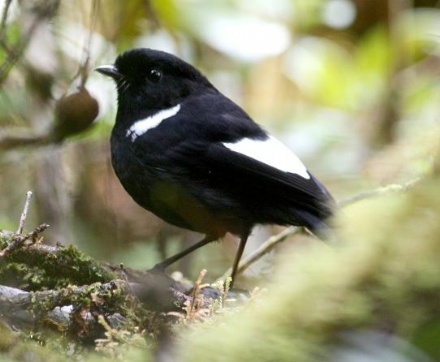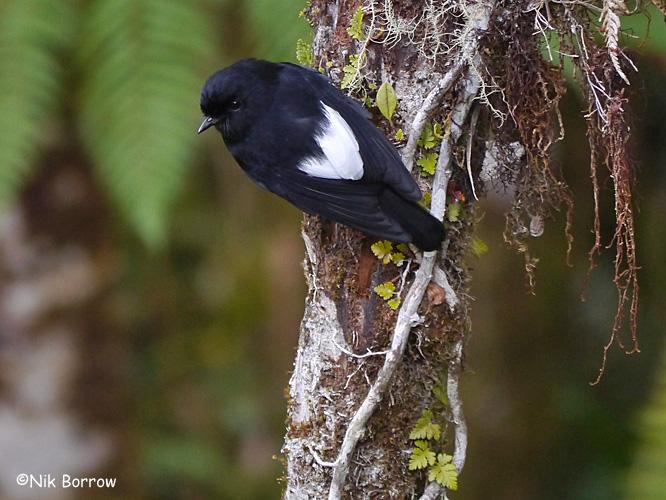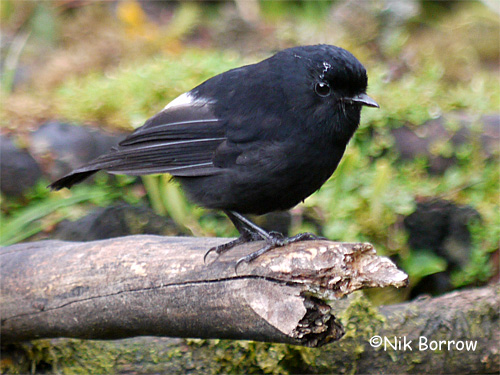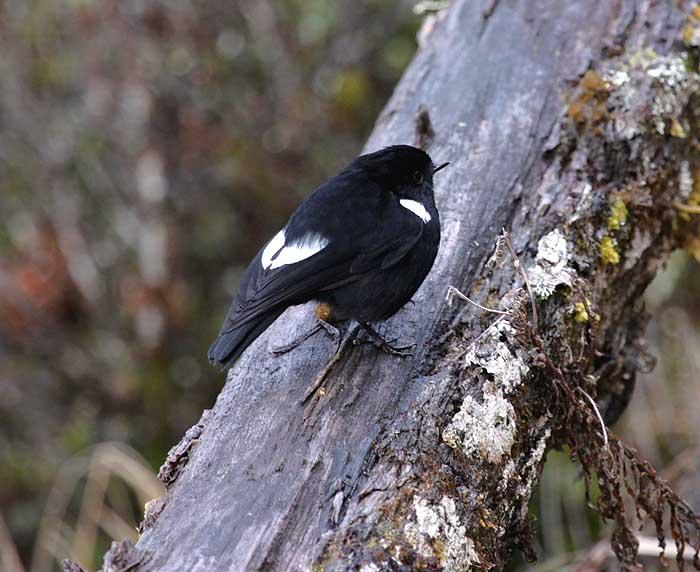
Peneothello sigillatus
SUBFAMILY
Petroicinae
TAXONOMY
Poecilodryas sigillata De Vis, 1890, southeastern New Guinea.
OTHER COMMON NAMES
English: White-winged thicket-flycatcher; French: Miro б ailes
blanches; German: Spiegeldickichtschnдpper; Spanish: Tordo
Australiano de Alas Blancas.
PHYSICAL CHARACTERISTICS
5.7 in (14.5 cm); c. 0.6 oz (16 g). All black with white on secondaries.
DISTRIBUTION
Central ranges of New Guinea and the mountains of Huon
Peninsula. Four subspecies.
HABITAT
Mid-montane and subalpine forests and adjacent shrubs, between
6,500 and 12,000 ft (2,150–3,900 m) elevation.
BEHAVIOR
Tame; found singly, in pairs, or small family groups. Perches
on mossy branches. Song is comprised of trilling and piping
notes that rise and fall. Metallic notes and sharp alarm call.
FEEDING ECOLOGY AND DIET
Gleans and snatches from branches, trunks, and the ground for
insects. Also takes some fruit.
REPRODUCTIVE BIOLOGY
Breeds from September to January. Bulky nest is made of
green moss, dried fern, and rootlets, placed in a tree fork.
Clutch is comprised of a single, light-olive-colored egg,
sparsely marked with brown.
CONSERVATION STATUS
Not threatened. Common in its habitat.
SIGNIFICANCE TO HUMANS
None known.
Photo Gallery of - White-winged robin




 Animalia Life
Animalia Life